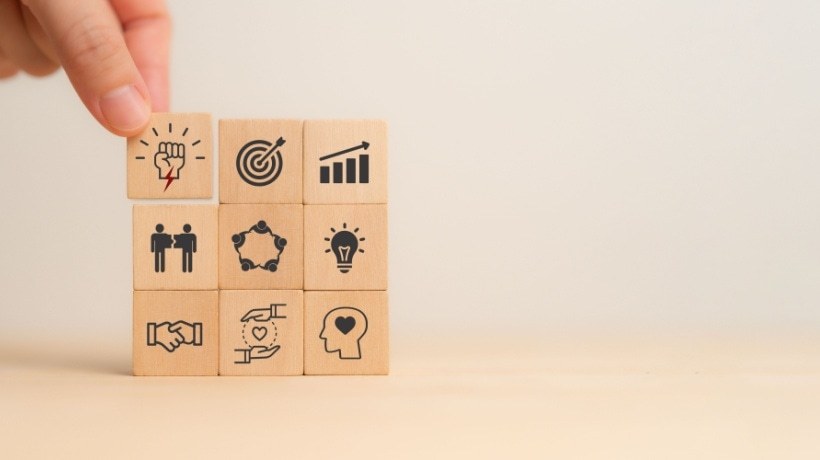
From Isolated Learners To Collaborative Ecosystems
Isolated learners don’t make for good repeated learners with durable outcomes. When learning is designed as a standalone event or a one-way content push, it becomes transitional and transactional, completed and forgotten. That’s not how real growth happens. But when learners are immersed in the power of community, everything changes. Learning becomes anchored in common objectives and shared goals. Peer learning is unlocked. Confidence grows. Participation deepens. People don’t just consume knowledge; they apply it, refine it, and expand it through the insight of others. The same applies to customers.
Benchmarking: Easier With The Power Of Community
One of the most common questions I get from clients is: “How are other companies performing in X, Y, Z?” This isn’t about competition in the traditional sense. It’s about orientation and benchmarking. It’s a way to validate progress, pressure-test strategies, and gain confidence that what they’re doing is either on the right track or needs refinement. Whether we admit it or not, benchmarking is innate. We want to know how we’re doing in relation to others. It’s part of human motivation, especially when we’re trying something new, complex, or high-stakes.
The same instinct shows up in learners. People want to know how their peers are progressing. Are they behind? Ahead? Doing it differently? Better? Communities offer a healthy outlet for this comparison, one that drives motivation rather than discouragement. When designed well, they create an environment where learners uplift each other while naturally pushing toward a shared standard of excellence.
When clients aren’t isolated, when they’re immersed in a collaborative approach, they learn from each other. And sometimes, they uncover solutions that even customer success managers hadn’t thought of. These shared discoveries not only reduce the pressure on internal support teams but also unlock innovation that would be impossible in a silo. In both cases, learners and customers, the community creates momentum. It introduces a dynamic of mutual accountability and inspiration. It transforms passive engagement into active contribution.
How To Tap Into The Power Of Community
If you want to move beyond transactional learning and toward lasting, high-impact growth, start with the following actions:
- Create spaces where learners can interact and learn from each other
Don’t limit learning to top-down content. Design environments for peer-to-peer dialogue and shared reflections. - Choose eLearning systems that support modern community features
Move away from outdated forum-style setups. Prioritize platforms that embed real-time interaction and dynamic collaboration. - Identify and empower community champions
One engaged learner can spark a ripple effect. Let highly active participants pull others along by example. - Introduce the role of a community manager for learners
Just like in customer success, this person helps connect people, surface insights, and maintain a steady rhythm of engagement. - Incentivize contributions, not just completions
Highlight valuable exchanges like questions, shared experiences, or problem-solving posts. These behaviors signal deep learning. - Design for healthy benchmarking
Help learners and clients compare progress in a way that inspires and validates. A shared sense of progress strengthens both motivation and outcomes. - Encourage real personal connections
Add learner bios, spotlight contributors, or recognize peer-to-peer support moments. Learning improves when people feel seen and valued.
This kind of mutual support doesn’t eliminate comparison, it refocuses it. Rather than being demotivated by others’ progress, learners are encouraged to see what’s possible. They benchmark with the intention to grow, not to win. In the same way, when clients hear how peers approached a rollout, overcame adoption barriers, or unlocked executive sponsorship, it gives them confidence and a road map. It doesn’t threaten them, it reassures them.
Fueling Insight At Scale
Benchmarking within a community also fuels insight at scale. You gain richer visibility into what good looks like across a portfolio. You begin to see patterns: which strategies work, which ones fall flat, and who is quietly solving problems others are still struggling with. That collective intelligence becomes an engine for proactive guidance and better-informed decisions. For learners, that means the difference between checking a box and actually shifting behavior. For customers, it means moving faster, making fewer mistakes, and seeing clearer ROI. And in both cases, it creates a sense of being part of something bigger than a platform or a product.
Both learning and customer success thrive on connection. When people are part of a community, they don’t just consume. They contribute. They don’t just follow a path. They help build it. It’s time to design learning and customer ecosystems where no one learns alone and everyone moves forward together.

